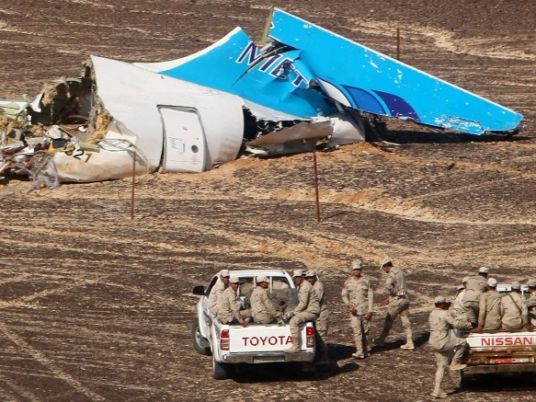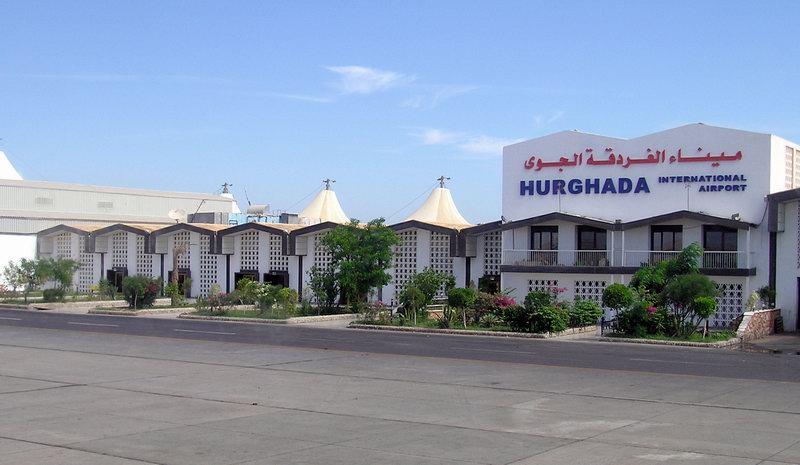
The Russian plane that crashed in Egypt was not struck from the outside and the pilot did not make a distress call before it disappeared from radar, a source in the committee analysing the flight recorders said on Monday.
The source declined to give more details but based his comments on the preliminary examination of the black boxes recovered from the Airbus A321 which crashed in the Sinai Peninsula on Saturday killing all 224 people on board.
A civil aviation source said only that Egyptian investigators aided by Russian and French experts had not yet finished examining the black boxes.
Russian officials have said the plane, carrying holidaymakers from the Red Sea resort of Sharm el-Sheikh to St Petersburg, likely broke up in mid-air but said it was too early to say what caused it to crash.
The first bodies recovered from the wreckage arrived on board a Russian government plane at St Petersburg's Pulkovo Airport, where grieving Russians left piles of flowers.
A Reuters photographer saw a white lorry leaving the airport, escorted by police cars, heading for a St Petersburg morgue, where the bodies were to be identified.
Russian news agencies said the plane carried 144 bodies and a second government plane was due to leave Cairo on Monday evening.
Russian President Vladimir Putin, who had declared Sunday a national day of mourning, said on Monday the crash was a great tragedy.
"Without any doubt everything should be done so that an objective picture of what happened is created," Putin said in comments cited by ITAR-TASS. "So that we know what happened."
When asked if a terrorist attack could be to blame, Putin's spokesman Dmitry Peskov said no theory could yet be ruled out.
An Egyptian militant group affiliated with Islamic State said on Saturday it brought down the plane "in response to Russian air strikes that killed hundreds of Muslims on Syrian land". Russia's transport minister dismissed the claim, saying it "can't be considered accurate".
Alexander Smirnov, deputy general director of airline Kogalymavia, which operated the plane under the brand name Metrojet, said only a "technical or physical action" could have caused the aircraft to break up in the air.
"The plane was in excellent condition," Smirnov told a news conference in Moscow. "We rule out a technical fault and any mistake by the crew."
MILITANTS
His comments came amid growing evidence that the plane and its crew had passed the necessary safety and medical tests, and a Russian inspection of its fuel found that it met requirements.
The airline said both engines were inspected in Moscow on Oct. 26 and no problems were found while a previous tail strike had been fully repaired and would not have affected safety.
The aircraft had received a certificate of airworthiness earlier this year from regulators in Ireland, where it was registered.
Russia, an ally of Syrian President Bashar al-Assad, launched air raids against opposition groups in Syria including Islamic State on Sept. 30.
Islamic State, the hardline group that controls swathes of Iraq and Syria, has called for war against both Russia and the United States in response to their air strikes in Syria.
Sinai is the scene of an insurgency by militants close to Islamic State who have killed hundreds of Egyptian soldiers and police and have also attacked Western targets in recent months.
However, militants in the area are not believed to have missiles capable of hitting a plane at 30,000 feet.
Islamic State websites have in the past claimed responsibility for actions that have not been conclusively attributed to them.
Those on board the flight included 214 Russians, at least three Ukrainians and one Belarusian, most returning from the Red Sea, popular with Russians seeking winter sun.
Russia and other former Soviet republics have poor air safety records, notably on domestic flights. Some accidents have been blamed on the use of ageing aircraft, but industry experts point to other problems, such as poor crew training and lax government controls.
The A321 is a medium-haul jet in service since 1994, with more than 1,100 in operation worldwide and a good safety record.
Airbus said the A321 was built in 1997 and had been operated by Metrojet since 2012. It had flown 56,000 hours in nearly 21,000 flights and was powered by engines from International Aero Engines consortium.
The aircraft disappeared from radar screens 23 minutes after take off at an altitude of 31,000 feet (9,400 metres), Egypt's Civil Aviation Ministry said.
According to FlightRadar24, an authoritative Sweden-based flight tracking service, the aircraft was descending rapidly when the signal to air traffic control was lost.




